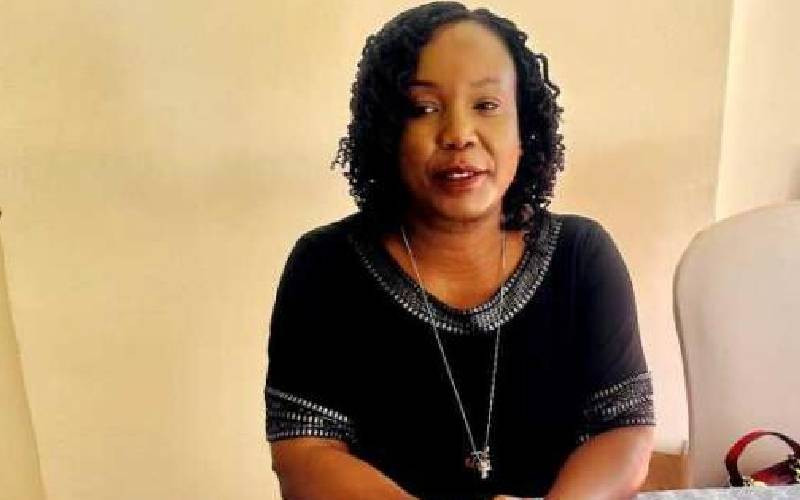By Sam Otieno
The Teachers Service Commission wants the Government to lift the freeze on recruitment of teachers to address an acute shortage in primary and secondary schools.
The TSC yesterday said the current shortfall of over 66,000 teachers is "a catastrophe" for the education system.
According to the latest assessment by the TSC, primary schools need 43, 012 new teachers while secondary schools need 23, 291 teachers.
TSC secretary Gabriel Lengoiboni yesterday told The Standard that if the freeze continues the shortfall would shoot up to more than 81,000 teachers at the end of the financial year beginning July 1.
Lengoiboni said primary schools alone would have a shortage of 53, 012 teachers, while post-primary institutions will face a deficit of 28, 377 teachers by July next year, if new teachers were not employed.
"These projected figures are appalling. They show the crisis facing schools," said Lengoiboni.
The plea to allocate more money to employ more teachers coincides with the reading of the 2010-2011Budget by Finance Minister Uhuru Kenyatta Thursday.
Lengoiboni said 2,000 primary school teachers have to be replaced, as do 1,500 in post-primary institutions who have since retired or resigned.
A senior deputy secretary in charge of staffing at TSC, Nancy Macharia, said their latest assessment places the current shortage of teachers at 66, 303.
Schools Shunned
The commission says many schools are finding it difficult to fill vacancies, while most rural schools have trouble attracting teachers.
Many secondary schools do not have enough teachers for subjects clustered as humanities, including Geography, Kiswahili, History and CRE.
Technical training institutions also face challenges recruiting teachers for law, aviation, pharmacy and lab technology.
"We have tried to relax some of the conditions for their employment, but we are still not attracting these people," sad Lengoiboni.
The shortage has been escalated by the rapid expansion of schools through the Constituency Development Fund (CDF) and the Government’s failure to replace teachers who quit.
An assessment by TSC’s staffing department shows 8, 000 new primary schools, and 2, 586 secondary schools have been established since the introduction of CDF in 2003.
Head teachers have also blamed the uncontrolled expansion of educational institution for exacerbating the problem. Head teachers also say staffing is being mismanaged.
The Kenya Secondary School Heads Association (KSSHA) is compiling a report on how the shortage is undermining education.
"It is the big schools that are on the losing end, since senior teachers are being poached to head them, thereby starving other schools," said Cleophas Tirop, the national KSSHA chairman.
Tirop said the association is proposing that many schools with few students, and which are close to each other, be merged to ensure effective deployment of teachers.
He decried the fact that registration of schools has been left to politicians and communities, without the involvement of TSC.
"In future schools should be registered on a needs basis," he said.
The freeze on employment of teachers, he said, has resulted in a generation gap, and lack of interest in pursuing degrees in education at universities.
In the last financial year, the Government set aside Sh1.6 billion to recruit intern teachers. But hopes for recruiting over 12, 600 new teachers this year were dashed, after a standoff between the Government and the teachers’ unions.
big boost
This was after the Kenya National Union of Teachers (Knut) and the Kenya Union of Post-Primary Education Teachers (Kuppet) moved to court to block the Government from recruiting interns.
At a meeting with stakeholders at the Kenya Institute of Education, and another one earlier with Prime Minister Raila Odinga, there was a proposal that the matter be settled out of court.
TSC recruited only 1, 480 post-primary teachers recently. But the figure is far short of the optimum number needed, considering more than 10, 000 teachers leave the profession annually.
Of the 1, 480 recruits, 1, 104 were deployed in secondary schools while 196 were posted to technical and teacher training institutions.
Knut was protesting why the Ministry of Education ignored the TSC in the recruitment, yet it has the mandate to hire teachers.
Another bone of contention was whether the teachers should be hired on permanent and pensionable terms, or on contracts.
While the unions are rooting for permanent employment, the Government resorted to hiring them on short-term contracts.
A recent report by the Kenya Institute of Education blamed poor implementation of the curriculum on a shortage of teachers.
According to the report, Summative Evaluation of the Secondary School Education Curriculum, teachers are teaching students to pass exams at the expense of their holistic development.
As a result, the teachers concentrate on assessing achievement of learning objectives, ability of different learners, and promoting learners to the next class.
Students thus graduate with no practical skills, desired attitudes, or values.
The study concluded that the current secondary school curriculum does not adequately equip learners with the necessary competencies to meet the country’s aspirations.
Tirop said the Government should combine building of centres of excellence with hiring adequate teachers.
"Performance is not about buildings, but the quality of teachers in those schools. The centres may turn out to be centres of shame if proper staffing is not maintained," said Tirop.
 The Standard Group Plc is a multi-media organization with investments in media
platforms spanning newspaper print operations, television, radio broadcasting,
digital and online services. The Standard Group is recognized as a leading
multi-media house in Kenya with a key influence in matters of national and
international interest.
The Standard Group Plc is a multi-media organization with investments in media
platforms spanning newspaper print operations, television, radio broadcasting,
digital and online services. The Standard Group is recognized as a leading
multi-media house in Kenya with a key influence in matters of national and
international interest.
 The Standard Group Plc is a multi-media organization with investments in media
platforms spanning newspaper print operations, television, radio broadcasting,
digital and online services. The Standard Group is recognized as a leading
multi-media house in Kenya with a key influence in matters of national and
international interest.
The Standard Group Plc is a multi-media organization with investments in media
platforms spanning newspaper print operations, television, radio broadcasting,
digital and online services. The Standard Group is recognized as a leading
multi-media house in Kenya with a key influence in matters of national and
international interest.









